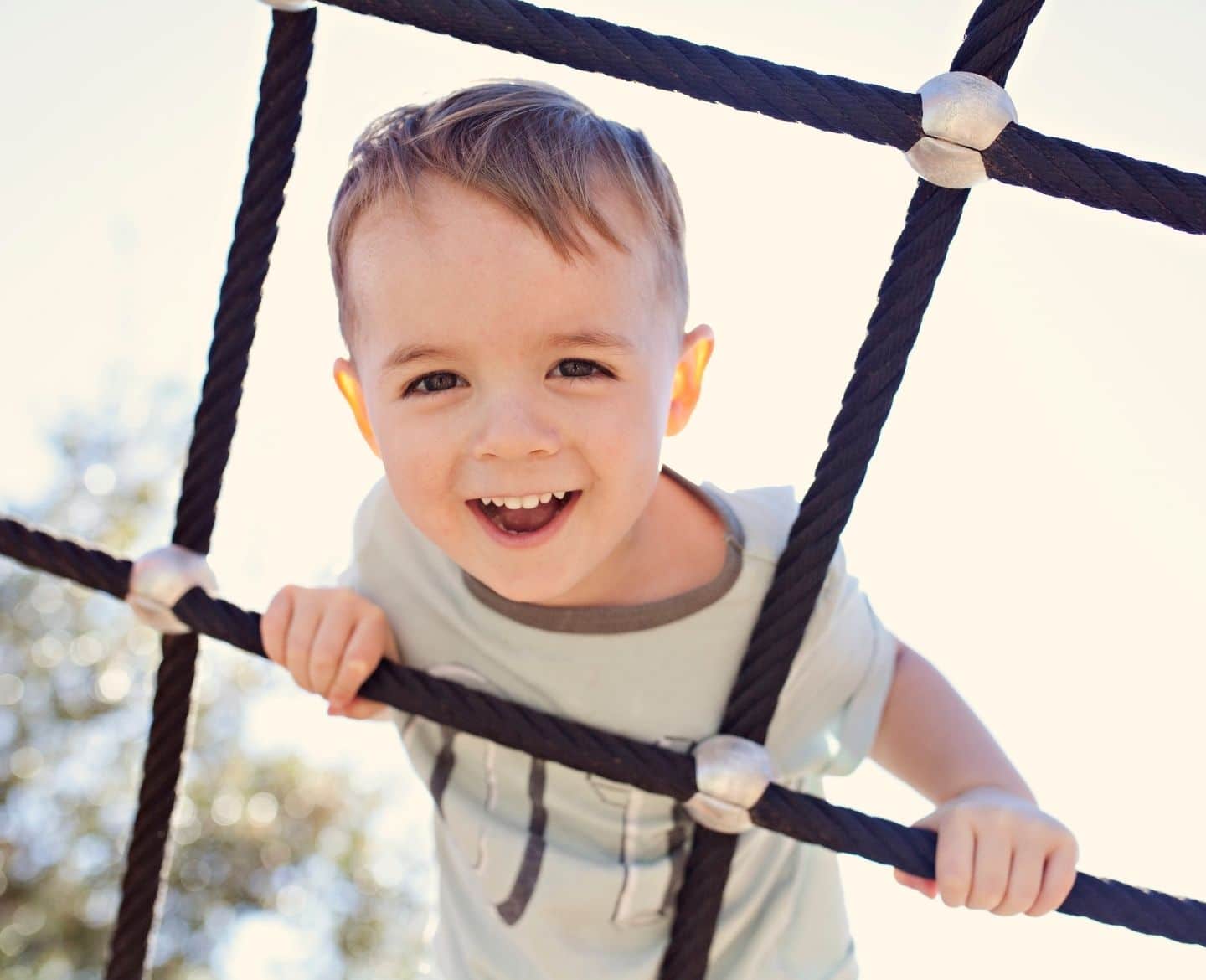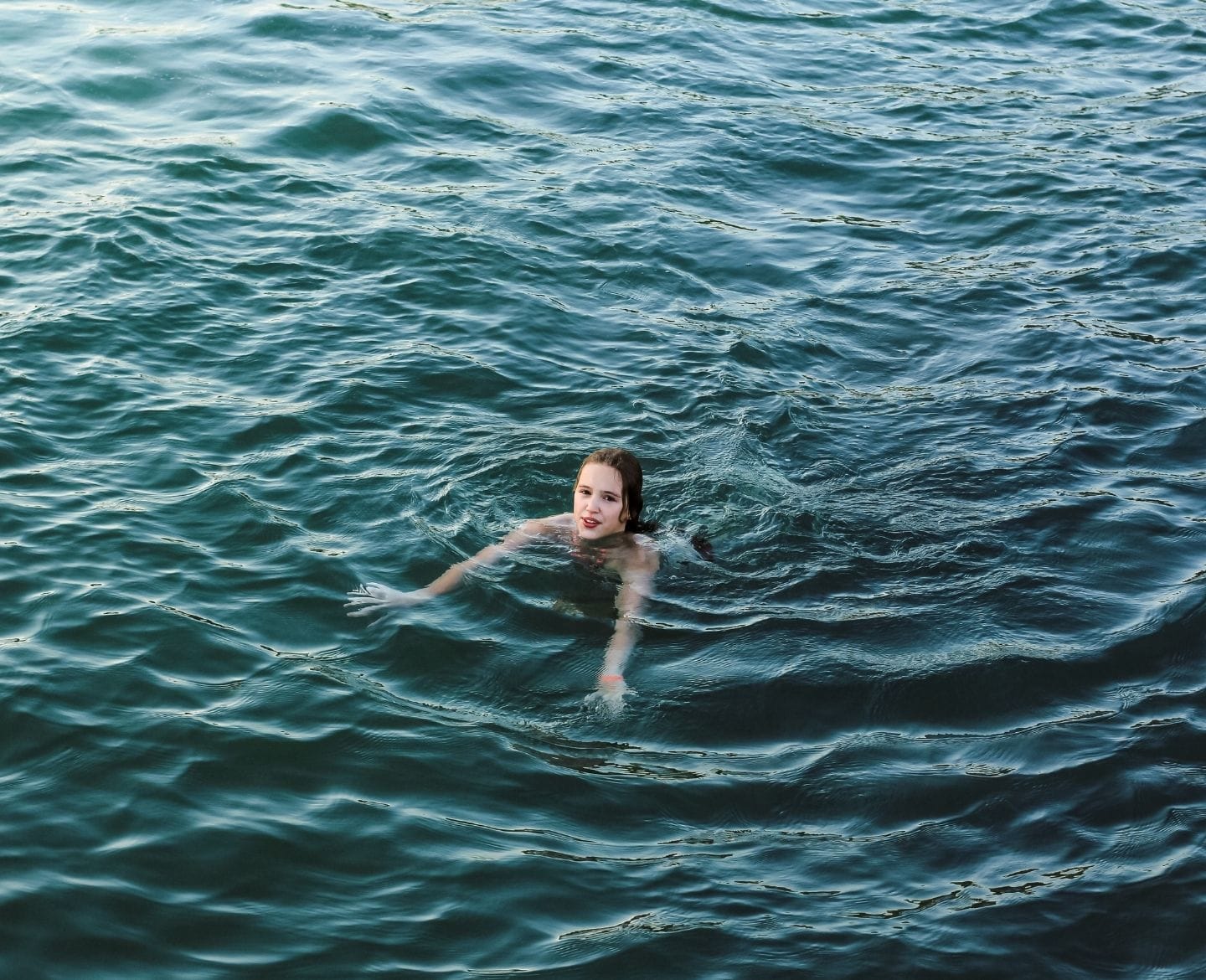Parents need to know more about the risks surrounding drowning, say grieving moms

They didn't know it soon enough, but they want you to know it now.
Table of Contents
Nicole Hughes lost her 3-year-old son, Levi, on June 10, 2018. As she points out in an emotional essay she wrote for Scary Mommy, drowning is the leading cause of death in children ages 1 to 4 and the second leading cause in ages 1 to 14.
And it can happen in less than a minute. In the majority of child drownings, the child wasn’t expected to be swimming at the time. That was the case for Hughes, who doesn’t know what prompted Levi to venture outside to the pool, alone, as she was cleaning up after dinner. It happened so fast.
“I was the one who found him, face down, in the deep end. Just moments before this horrific discovery, I split a brownie with him. I still had the other half of the brownie in my mouth when I jumped into the pool to grab my son. Mere moments, seconds,” Hughes writes.
Her pain is unimaginable, but in the days and weeks after Levi’s death, Hughes began to ask a very important question: “Why did I not know that drowning is the leading cause of death?”
In every photo she has of Levi on that last day of the family’s beach vacation he is wearing a lifejacket, and Hughes says the family took water safety very seriously. But she wonders how, as a mother on her third journey through parenting a preschooler, she had never heard that 69% of kids who drown were not meant to be swimming when they did ?
“But why did I not know about the dangers of drowning during NON-SWIMMING times? How did I not know it took less than one minute?” she writes.
Levi’s Legacy lives on
Now, Hughes is on a mission. She’s created a non-profit called Levi’s Legacy to ensure other parents know what she didn’t: That a child can drown when we think they’re inside eating a brownie, and that it happens so fast.
“I don’t want this role of water-safety advocate. I want 30 seconds back on June 10. But I am determined to share these facts I so desperately wish I had known,” she writes.
Hughes is asking the American Academy of Pediatrics to step up efforts to educate parents about drowning prevention, and feels that current resources on the AAP website fail to address the issue with the urgency it deserves.
Way back in the mid-90s the AAP noted that “although drowning is the second leading cause of death by unintentional injury in the pediatric population (aged 0 to 19 years), most pediatricians do not routinely provide information to their patients, or to their patients’ parents, on drowning prevention,” and suggested that if “the prevention of drowning is made a priority in pediatric practice, many more children’s lives will be saved.”
Hughes agrees, but says the AAP hasn’t been doing enough.
Hughes is not alone
So Hughes and other mothers are working to help spread the message they wish they had heard. Morgan Beck Miller , wife of Olympian Bode Miller, also lost a child to drowning in 2018. Her 19-month-old daughter, Emeline, drowned in a backyard pool the same day Hughes’ son did.
On Instagram, Miller encouraged her followers to read Hughes’ essay and learn more about drowning prevention. “It’s been 37 days since I’ve held my baby girl. I pray to God no other parent feels this pain. My heart is with you @nicolehughes8 as we walk this journey together,” she wrote.
“Drowning is the NUMBER ONE cause of death in children ages 1-4. We talk about vaccinations, car seats, organic foods, screen time, etc at length…but not the number one risk your children’s’ lives face…a silent killer. It takes SECONDS. Please share and help us spread awareness. It’s the first step to preventing these types of tragedies.”
Water safety tips:
- Assign a supervisor: The Mayo Clinic recommends that when kids are using a pool, parents turns as the “designated watcher”, so that one adult is always focused on the kids. Hughes’ organization, Levi’s Legacy, has created “water guardian” tags that adults can wear to show that they are the one watching responsible for pool supervision at that moment. The CDC says “supervisors of preschool children should provide ‘touch supervision’ be close enough to reach the child at all times.”
- Install barriers: Many pool drownings are the result of a child getting into a pool when they were not expected to be near it. That’s why the CDC recommends “self-closing and self-latching gates that open outward with latches that are out of reach of children,” and “additional barriers such as automatic door locks and alarms to prevent access or alert you if someone enters the pool area.”
- Fences that provide a complete barrier around all sides of a pool may prevent 7 out of 10 drownings of children under 5, notes Parachute , a charity dedicated to injury prevention.
- If you’re renting a beach house or booking an Airbnb with a pool, look for one with these features.
- Keep toys away from the pool: The CDC suggests that as soon as pool time is over, parents put away any toys, floats or other fun objects that may be in or around the pool. Removing the toys removes an element of temptation for children.
- Take swimming lessons: According to the AAP , “children over age one may be at a lower risk of drowning if they have had some formal swimming instruction. However, there is no evidence that swimming lessons or water survival skills courses can prevent drowning in babies younger than one year of age.”
- Take a CPR course: When seconds count, you want to be ready to do everything possible to save a child.
These two mothers have been through a loss that most parents cannot even fathom, and if they get their way, none of us will have to.
[This post was originally published July 18, 2018. It has been updated.]





































